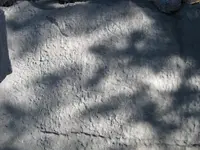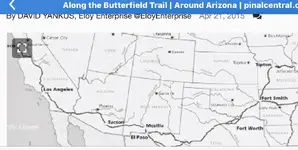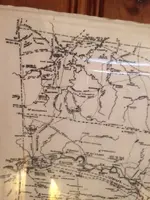I wonder if the Native American traders had cache sites, along the trade routes, that they marked with symbols.
Copper culture may provide examples.
I've read of caches. Some more stacked material on surface (vs float copper) alleged to be in relay locations.
Trails leaving the copper range gravitate towards Detroit in my area. Older trails still being followed to get there perhaps....
To the West , rivers were used to head South. Then I'm not familiar with distribution to the S.W. , but Poverty point is acceptable to me as still being related to the copper range so far away from it.
[The site is located in the northeastern corner of Louisiana, northwest of Vicksburg, Mississippi at 33°N (Fig.1). Poverty Point is built on Maçon Ridge, a plateau 90 miles long, and five miles wide, in the swampy floodplains of the Mississippi River. Gibson reports 38 radiocarbon dates, all between 2278 BC (2470-2040) and 650 BC, with most between 1500 and 1300 BC. Gibson says that while the land and waters were biologically rich, the richest asset was the location. “This was one of the few places in the entire Mississippi valley where a departing pirogue could have been paddled without portages]
Where Wisconsin copper culture can be traced is in some of their burial sites. Can they be considered to be along routes of movement?
The thousands of year old sites here are water route related. With few large rivers converging it's not too hard to stay on course. But if markers were needed ,they would seem to be needed at riverine intersections. Or maybe better put ,where streams joined rivers...
There were villages among most of them though. If you knew the nation/tribe had a village at a given location ,you knew where you were. Or could simply inquire. (?)
Where eons old trails/routes were established they had to address rising and receding water levels. At least some are underwater today.
Those needed newer routes could have generated new markers. How permanent or temporary though.....
Most rivers head South. Sun rises in the S.E. here this time of year but basically East.
If you are headed for another waterway by following one you have a decent shot at it.
The Saulk trail cuts across a dry stretch in places but South of big water. With a predominant N.W. wind it might allow smelling that water.
Compacted soil from traffic leaves a good foot trail when used regular. Depending on soil it can take years to "heal" /recover if traffic is stopped. You've seen those.









